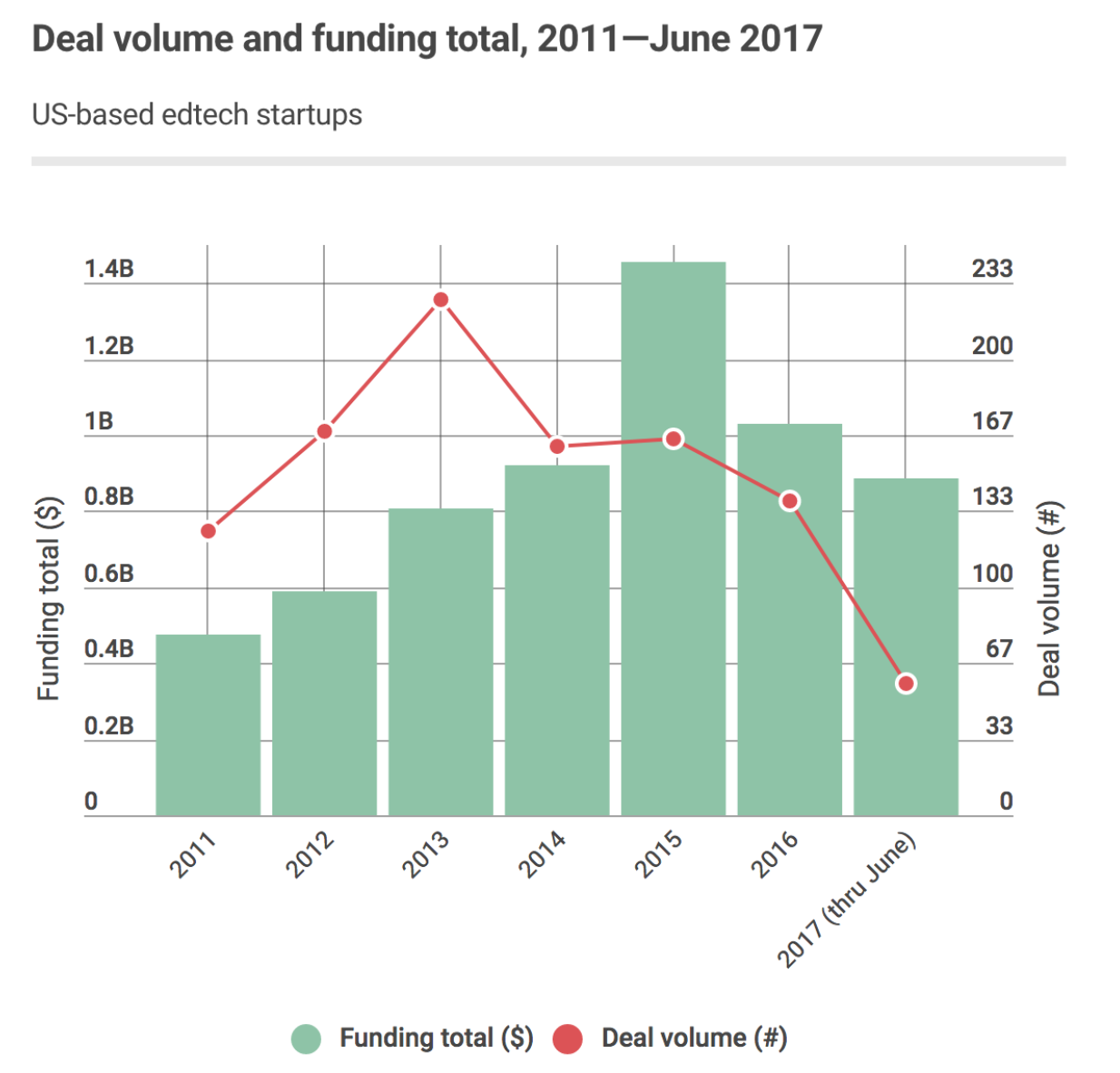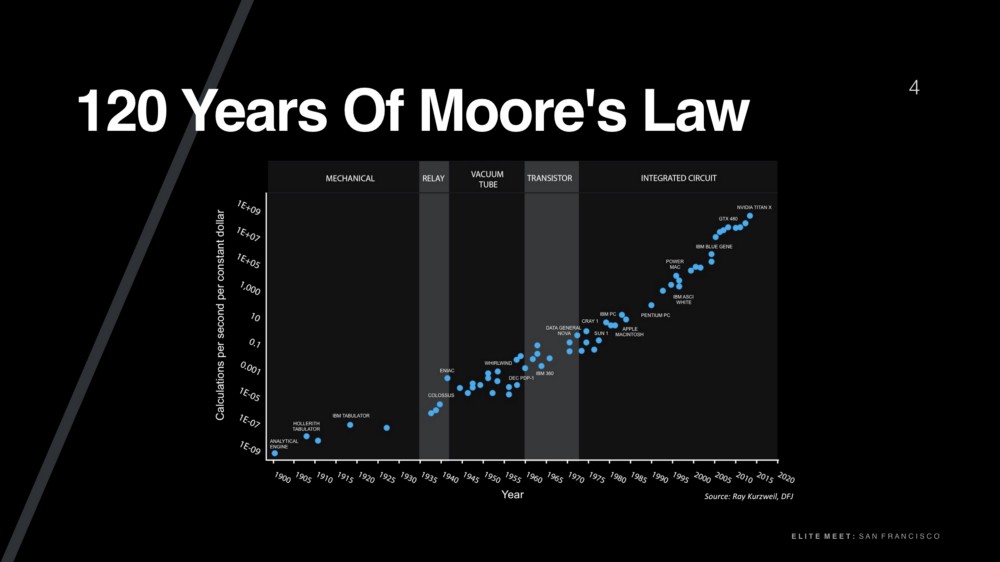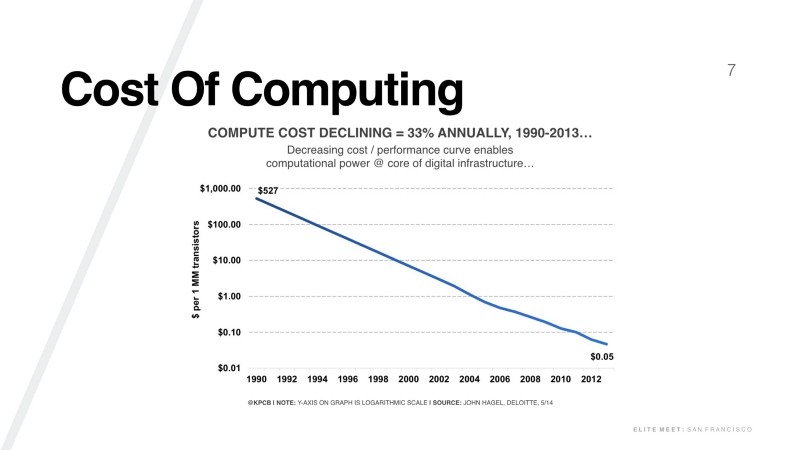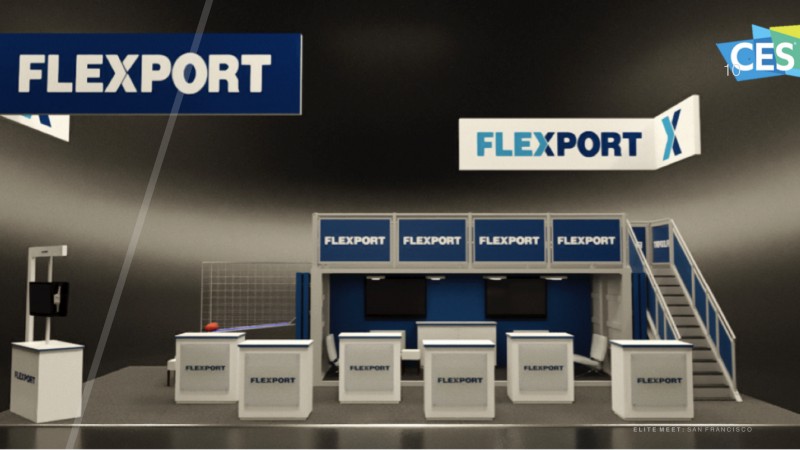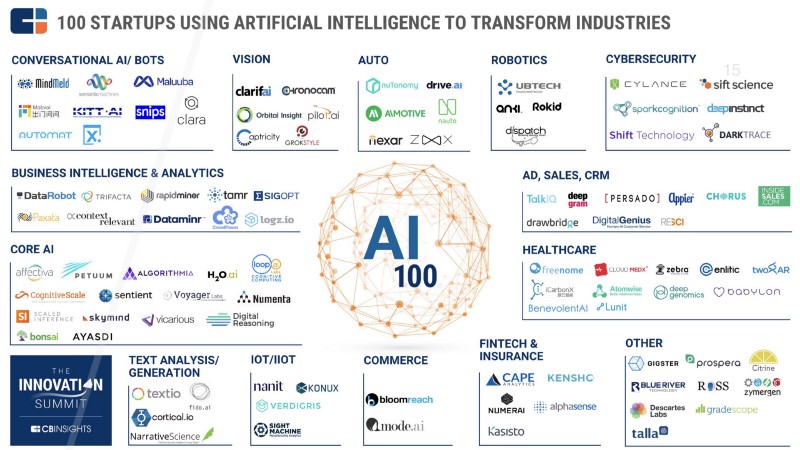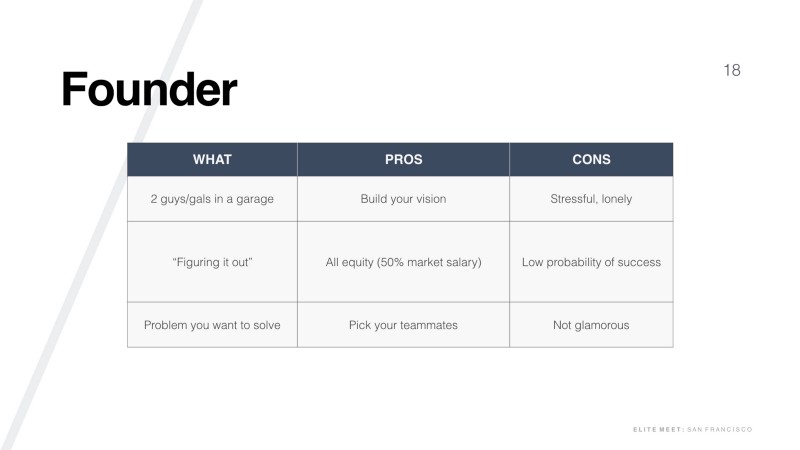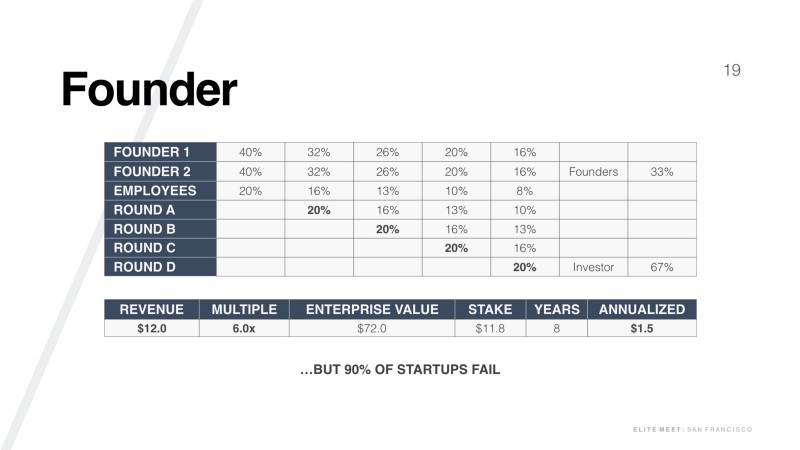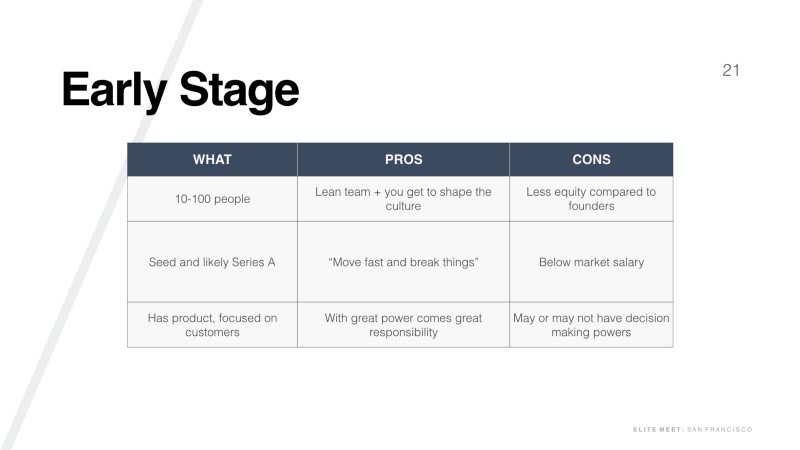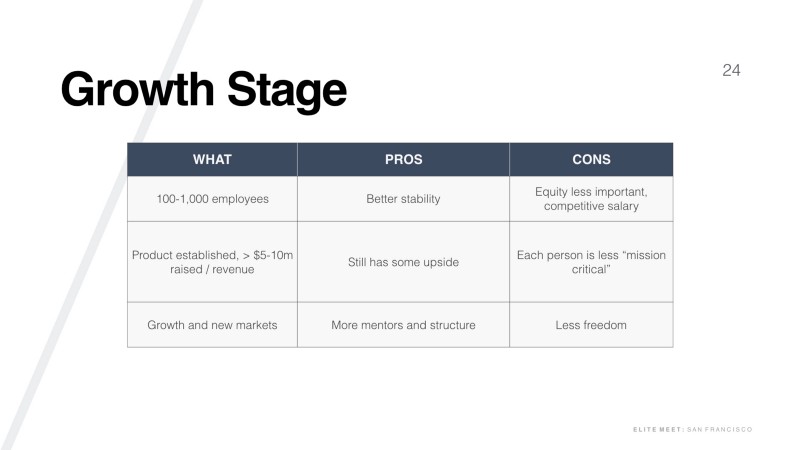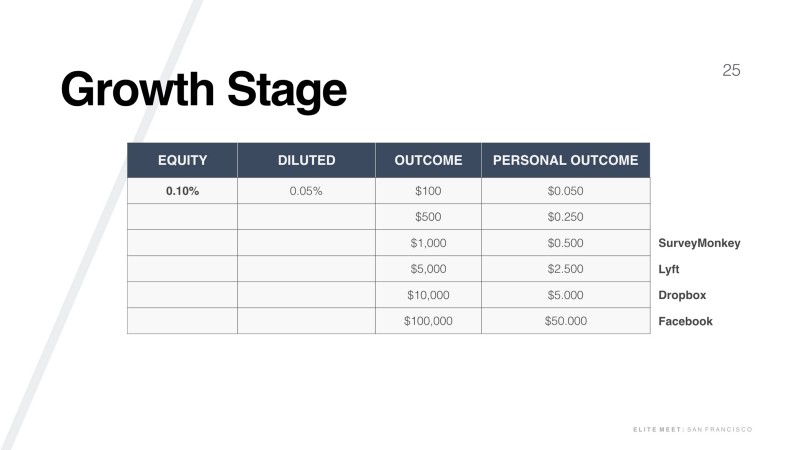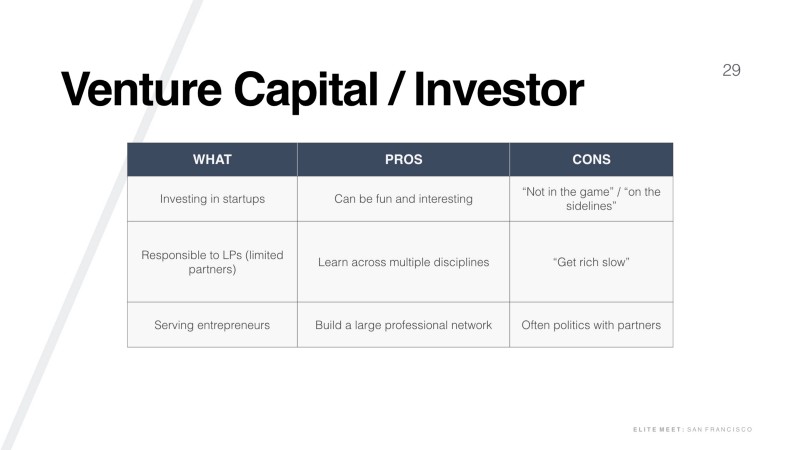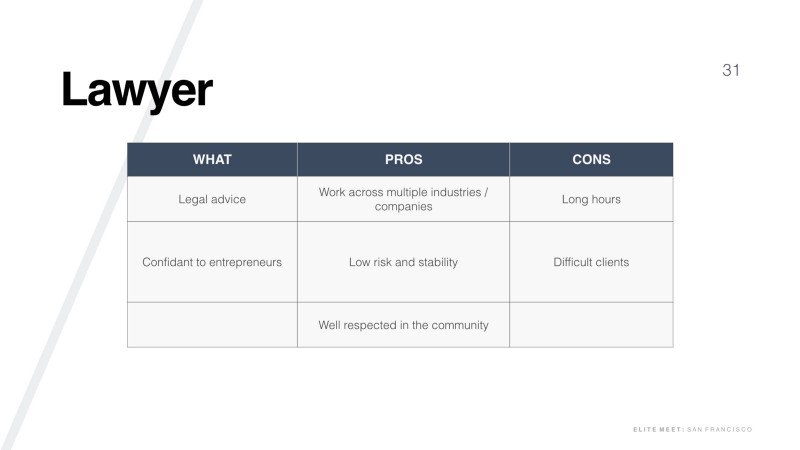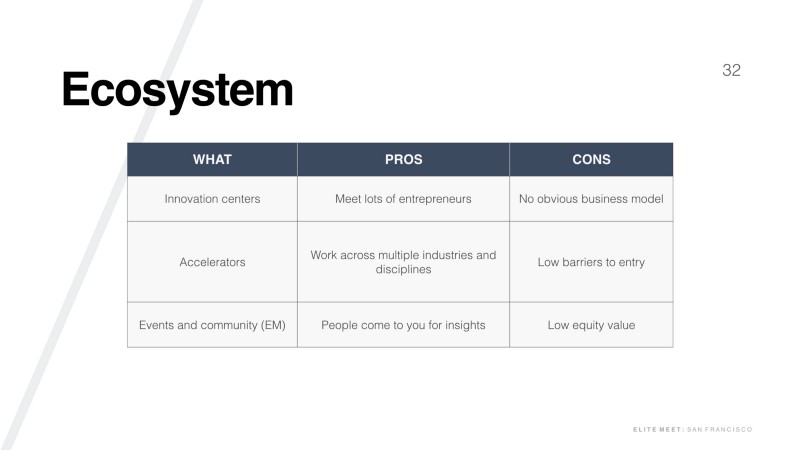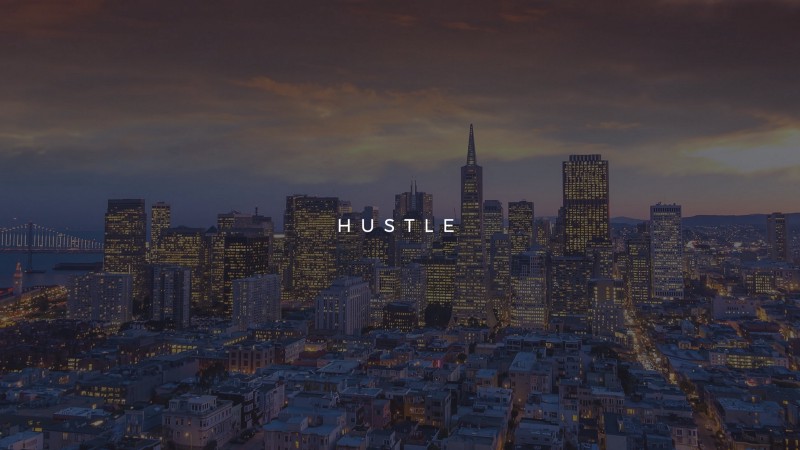Market Snapshot
| Indices | Week | YTD |
|---|
The Human Genome Project is perhaps the greatest accomplishment in exploration history, producing a “map” unlike the world has ever seen.
Unlike the outward voyages of discovery by adventurers like Lewis and Clark, Columbus, or the Apollo astronauts, the HGP’s mission was inward. But it was no less ambitious. In 1990, scientists set out to sequence the three billion DNA base pairs that make up the human genome in 15 years. They did it in 12 at a cost of $3.8 billion.
Moore’s Law and the megatrend of “Software Eating the World” are having a revolutionary impact on the cost for an individual to receive their own genetic map. In 2008, it cost $1 million for a person to create a personalized gene map. By 2011, it was $100,000. In 2014, it cost $1,000 — less than a chest X-Ray — and today you can get a personal genetic report for less than $300.
The fact that everybody can and should have their own genetic profile has profound implications to the future of medicine and human life. This isn’t science fiction. The Human Genome Project has laid the foundation for personalized, preventative medicine that will result in a healthier society, longer lifespans, and significant drops in the cost of healthcare.
The human brain is the next frontier. Breakthroughs in research, enabled by powerful new technology fundamentals, are poised to transform how we treat cognitive disorders, how we design education models, and even how to get more out of our minds. And we don’t need a complete map to begin reaping the rewards.
STATE OF PLAY
While the brain is at the center of our existence, we know remarkably little about how it works. As Dr. Thomas Insel, the former Director of the National Institute of Mental Health (NIMH), remarked in 2015:
In the 1970s, we had a pretty good understanding of how the kidney serves as a filter, how the heart serves as a pump, what lungs do and how they do it. But today I can’t tell you — nor can anyone else — how the brain functions as an information processing organ. How does it do it?
In 2013, the White House proposed a major national project to unlock the mysteries of the brain — the Brain Research through Advancing Innovative Neurotechnologies (BRAIN) Initiative. At the time, the President called on scientists to, “get a dynamic picture of the brain in action and better understand how we think and how we learn and how we remember.”

To date the BRAIN initiative has funded a wide range of research through an alphabet soup of government agencies, including the Food and Drug Administration, the National Science Foundation, and many more. Stated goals range from “Creating transparency around the regulation of neurological medical devices” to “Improving treatments for veterans suffering from neuro-psychiatric illnesses.”
While the BRAIN initiative has grabbed headlines, much of the innovation in neuroscience has been catalyzed by private research initiatives and startups that are harnessing emerging technologies. Rather than waiting to complete the brain “map” like the Human Genome Project, many leading neuroscientists and entrepreneurs are instead focusing on using what they know to create life-changing applications today, learning and refining theories and methods as they go.
MAJOR RESEARCH INITIATIVES IN BRAIN SCIENCE

Following a stint at Alphabet’s life sciences spinout, Verily, for example, Dr. Insel is now the co-founder and president of Mindstrong Health, a behavioral healthcare startup launched in 2014 to diagnose and manage cognitive disorders. In an interview with Wired, Insel reflected that, “I spent 13 years at NIMH really pushing on the neuroscience and genetics of mental disorders, and when I look back on that I realize that while I think I succeeded at getting lots of really cool papers published by cool scientists at fairly large costs — I think $20 billion — I don’t think we moved the needle in reducing suicide, reducing hospitalizations, improving recovery for the tens of millions of people who have mental illness.”
BRAIN GAMES
It wasn’t long ago that conventional wisdom held that the functioning of our brains — including neurological maladies — is set early in life. The capacity to train and improve the diverse mental abilities that make up our intelligence was not considered possible.
But over the last twenty years, researchers have demonstrated that the brain is in fact “plastic” — it can physically remodel itself. The implication is that brain “plasticity” can be manipulated in ways that treat and prevent afflictions that were once deemed permanent.
The convergence of neuroplasticity research with powerful new digital technologies — from gaming to virtual reality — will lead to transformative innovation. Dr. Adam Gazzaley, the visionary Founding Director of Neuroscape at the University of California, San Francisco (UCSF), is at the vanguard.
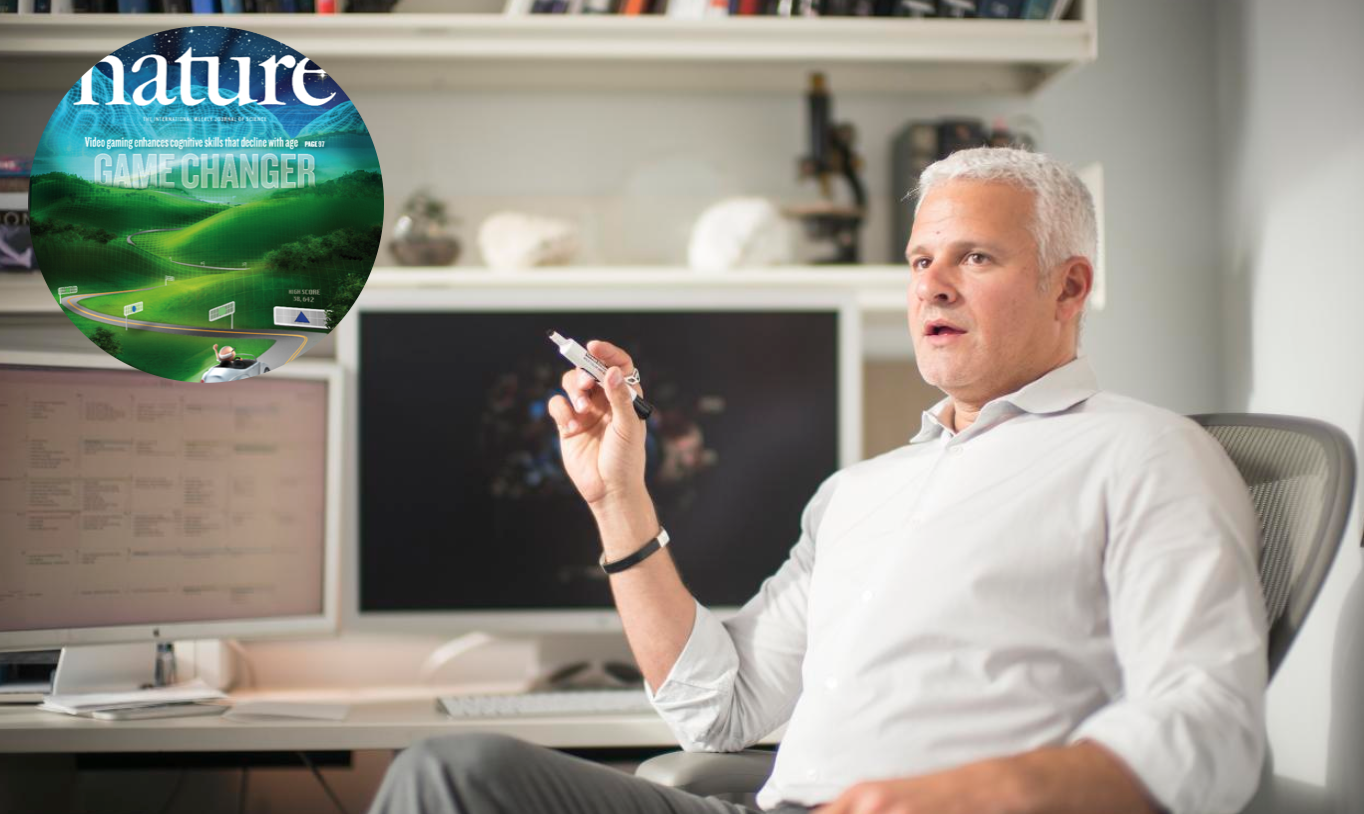
In 2013, Dr. Gazzaley demonstrated that swerving around cars while simultaneously picking out road signs in a video game could improve the short-term memory and long-term focus of older adults. Some people as old as 80, the research noted, began to show neurological patterns of people in their 20s.
The game, NeuroRacer, was an unprecedented collaboration between the best in digital media and the best neuroscience. Working with top designers from LucasArts — creators of the Star Wars video game franchise — the vision was to create a highly engaging video game that fundamentally improved the functioning of the mind. Dr. Gazzaley and his team demonstrated that you could truly use gaming to train the brain. His findings were featured on the cover of Nature on September 5, 2013, with the title, “Game Changer.”
Bridging the Gap between Technology and Neuroscience
Peel away the entertainment layer and storyline, and video games are simply complex problems waiting to be solved by players. Games force users to process information and master skills in real time. The game does one thing, the player responds. In order to beat the game, the player needs to master the system.
The fundamental concept that has driven Dr. Gazzaley’s work is applying “closed-loop” systems in the form of video games that target specific neurological objectives.
The first step is to identify the target of the game — the different facets of our cognitive capabilities and the underlying neural systems that drive them. These include attention, working memory and goal management.
Next, a game is designed to emphasize those abilities. It records performance in real time and adapts itself to focus on the areas where users most need help. That goes back to your brain and creates the desired closed loop.
In closed-loop systems, the system 1) challenges the user with an intervention; 2) records the influence of the challenges in real time; and 3) immediately updates the challenge to be more effective to get the desired outcome. This personalized feedback locks users into a constant cycle of improvement, and this technique, coupled with fun and immersive video games, can result in transformational outcomes.
In 2011, Gazzaley co-founded Akili, a company with a mission to create validated cognitive therapeutics, assessments, and diagnostics delivered through high-quality video games. The company is partnered with leading Universities (University of Washington), pharmaceutical and biotech companies (Pfizer, Shire, Merck, Amgen) and foundations (Autism Speaks) to develop novel games that treat ailments such as ADHD and Alzheimers through their flagship product Project: EVO, which is currently seeking FDA approval.
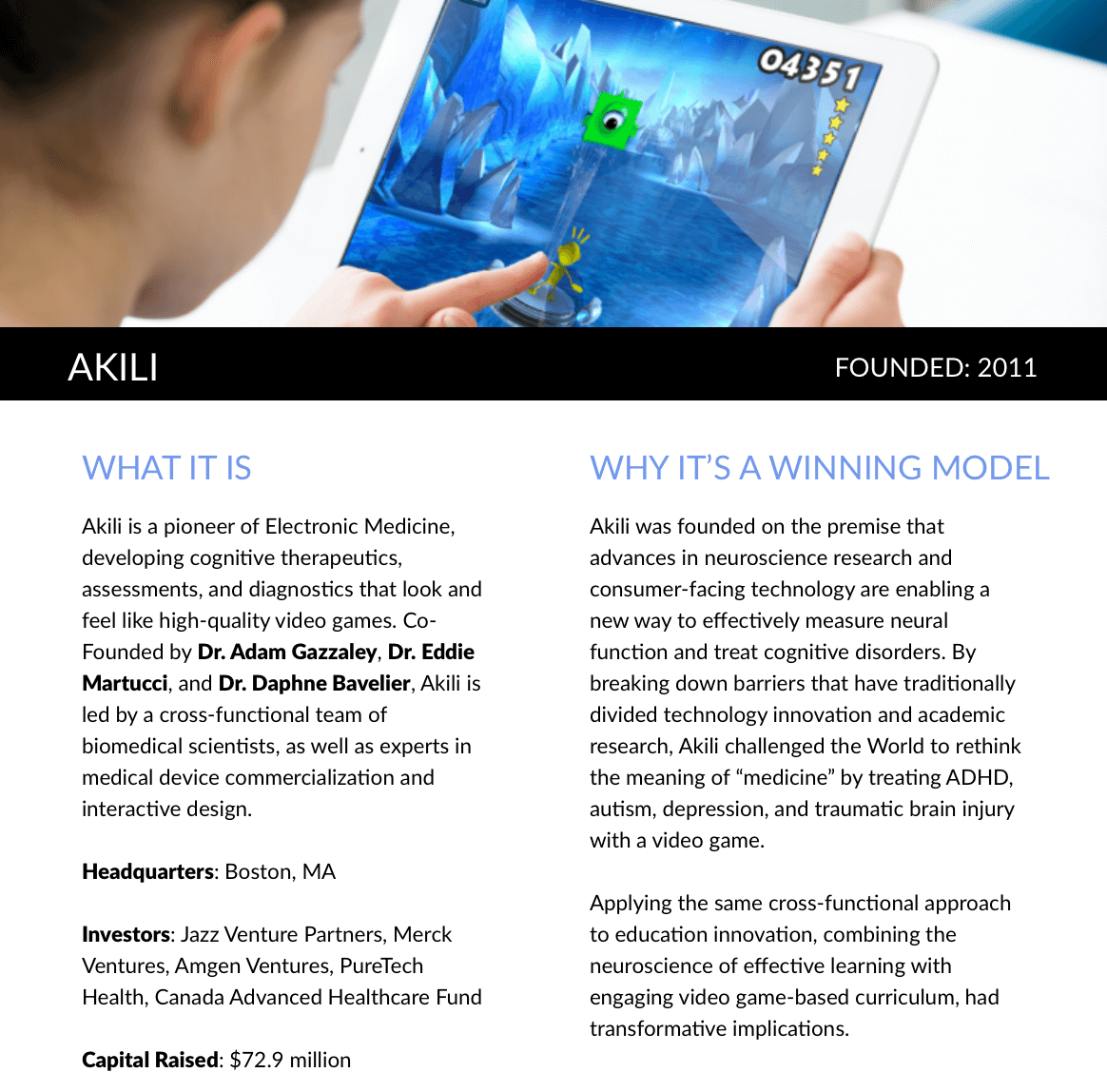
Source: Company Disclosures, Crunchbase, GSV Asset Management
Today, one third of people die from some form of dementia. Over 2 billion people suffer from brain-based challenges, which rolls into more than $2 trillion of economic loss from suppressed productivity. Furthermore, 10% of children Worldwide are diagnosed with ADHD and another 10% of Americans adults suffer from mood disorders. Traditional health care tackles these ailments with prescription drugs, which often result in unwanted, sometimes life-threatening side effects, especially in children or the elderly.
The use of neurogames is a revolutionary new therapeutic model to restore and improve cognitive function. Soon, physicians will be prescribing games, as opposed to drugs, to effectively treat brain diseases and disorders. Adderall and other blunt instrument pharmaceuticals with terrible side effects are going to look like medieval medicine before long.
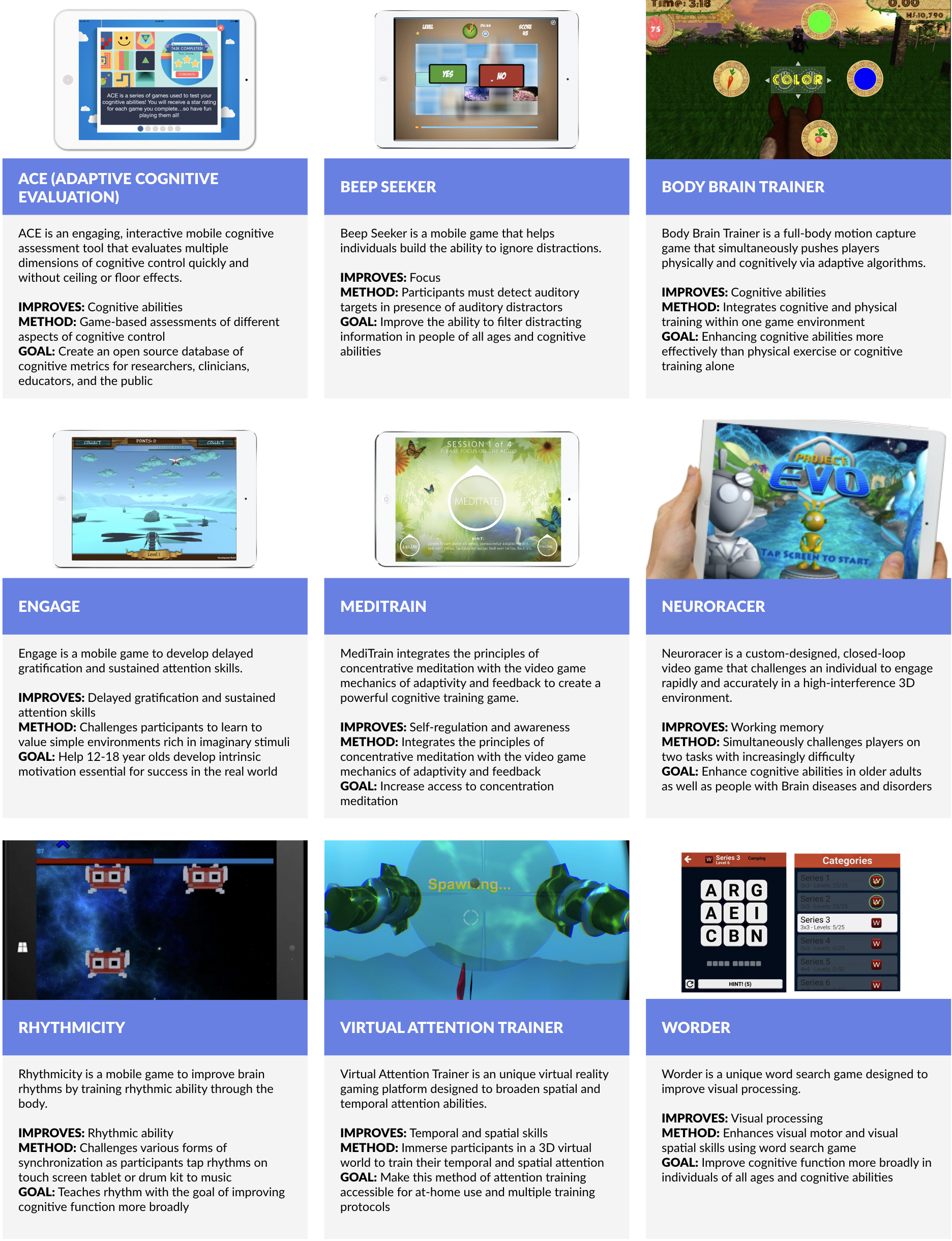
One Neuroscape game, Body Brain Trainer (BBT), is a full-body motion capture game that improves brain function by simultaneously challenging the core aspects of cognitive control — attention, working memory, multitasking — while prompting increasingly strenuous physical activity.
The game monitors the participant’s heart rate and uses adaptive algorithms to consistently ensure that players are challenged both physically and mentally. It’s scientifically proven that exercise can significantly improve brain function. By coupling that with brain training, BBT has the potential to enhance cognitive abilities more than physical or brain training alone.
83410.jpg)
Beyond treating disorders, the next step is to apply this technology to reimagine education. A game like Body Brain Trainer puts “gym class” in an entirely different context. In the future, educators will be able to optimize student development in ways that move beyond “content” or pedagogy.
Cognitive Therapeutics + Brain Games
For many brain training startups, their approach is to tiptoe around the expensive, time-consuming clinical trials for the time being to focus on building a “lighter,” unregulated consumer product first. Shying away from preliminary clinical validation does not make a company incapable of success in the long run.
In 2006, for example, 23andMe launched a $1,000 mail-order genetic test kit that required a simple saliva sample to produce a detailed genetic health and genealogical report. By 2012, 23andMe drove down the test kit’s price to $99.
In 2013, however, the FDA deemed their product an unregulated medical device and shut it down. Instead of giving up, Anne Wojcicki bided her time and partnered with pharmaceutical companies like Genentech and Pfizer and applied for FDA approval of her genetic tests. In 2015, 23andMe relaunched its newly FDA-approved genetic reporting service. Today, the company is valued at $1.1 billion and has been backed by NEA, Google Ventures, Fidelity, Genentech, and Illumina.

Apps such as Peak and Elevate Labs provide the user with a personalized program of fun, interactive games that exercise the mind. Peak focuses on training cognitive skills, such as memory, attention, and problem solving, whereas Elevate Labs targets skills to solve specific everyday problems, such as calculating a tip or writing a clear email.
EMERGING INNOVATION AREAS
Mindfulness
Living in the moment used to mean putting your phone away. But now, there’s an app for that. Healthy living has become a megatrend that not only affects how consumers want to look, but also how they want to feel. There is a reason that the #1 class in the four-hundred year history of Harvard College is “Positive Psychology” and the #1 course on iTunes U is “Mindful Meditations”: humans want to be happy.
This desire to be more in touch with emotions is reflected in the surging demand for products and services that are encouraging mental health and making meditation and mindfulness training more accessible. Market research firm IBISWorld has estimated meditation and mindfulness training to be a $1 billion industry in the U.S.
At the forefront of meditation and mindfulness technology is Headspace, a business that started in London with a valuation estimated by Forbes of about $250 million. The startup that began as a meditation event business took a centuries-old practice and packaged it into a consumable app that has been downloaded more than 11 million times. With the app, users can take a personal meditation class whenever and wherever they want.
Although Headspace may have been first, it certainly is not in lack of competition. Similar to Headspace, Calm is an app that teaches the basic techniques of meditation and helps the user incorporate mindful awareness into daily life.

Brain Stimulation
Since the time of the Romans, people have been using electrical brain stimulation to treat ailments ranging from headaches to neurological disorders. The methodology is rather simple. An internal or external device targets and stimulates activity in a specific part of their brain to improve functioning using either electrical of magnetic stimuli, or by stimulating a particular sense organ. To date, such therapy has been used to improve sleep and memory, to reduce anxiety, and to treat epilepsy and other debilitating disorders. Today, an estimated 125,000 people in the world are living with electrodes in their brains.
Given the invasive nature of this therapy, many companies need to seek FDA approval to get their device to market. Neuronetics and NeuroPace both offer FDA-approved medical devices that are proven to treat brain disorders. Neuronetics, backed by investors including GE, Pfizer and Polaris Partners, offers a non-invasive device that treats psychiatric and neurological disorders. Silicon Valley based NeuroPace’s device is an implantable neurostimulator that monitors and prevents seizures in people suffering from Epilepsy.

While some brain stimulation companies are working on heavy duty medical devices that require FDA approval, Silicon Valley-based Thync has created a new category of wearable devices functioning at the intersection of neuroscience and consumer technology. Thync’s technology is designed to enhance the daily lives of users by optimizing their mental states. Using a process called “neurosignaling,” Thync’s device delivered signals to the brain to effect mental states like relaxation, calm, energy, or focus.
Neural Interface
In 2014, neurologist and inventor Phil Kennedy, went where no one has gone before in the field. He paid a surgeon in Belize $25,000 to implant neural electrodes inside his brain so that he could obtain data for his research. He was 67 at the time. But after losing support of the FDA and running low on funding, he decided to experiment on himself.
Reactions ranged from horror to applause but the early results from his experiments were instructive. Kennedy was able to pinpoint the 65 neurons that fired distinct patterns when he spoke words. More importantly, he was able to record the same patterns when he imagined speaking the same words. Extrapolate this relationship and it could lead to a variety of “magical” applications.
Kennedy’s work was not without risk, underscoring how nascent this field of innovation is The initial surgery caused Kennedy to lose his ability to speak when he woke up. He was also temporarily paralyzed and eventually had to have his neural implants removed.
Despite the drawbacks, Kennedy’s findings were key to the field of developing neural interface technologies. Innovations in this field have mainly come out of research labs with purely medical applications simply because of the fragility and complexity of the human brain. But as the understanding of our brain is enhanced from new technology, neural interface technology becomes less of a moonshot.
Braintree co-founder Bryan Johnson founded and seeded his startup Kernel in 2016. Funded by more than $100 million of Johnson’s own money, Kernel and its team of leading neuroscientists and engineers aim to build an implantable neural interface to combat and reverse the effects of brain disease and dysfunction. Eventually, Johnson hopes to use the technology to make human brains faster and smarter.

Billionaire entrepreneur Elon Musk made headlines this March, announcing his newest company Neuralink, which aims to merge the human brain with artificial intelligence. Effectively, Neuralink will link and blur the differences between human intelligence and artificial intelligence. Like Kernel, Neuralink will likely use its technology to tackle brain diseases, eventually focusing on enhancing mankind as the product is refined. Elon Musk will take the helm as CEO, making him the CEO of three distinct companies.
Elon’s previous ventures — Tesla and SpaceX — are bold endeavors that aim to define how and where future humans will live. Neuralink aims to redefine what future humans will be.


